The Raspberry Pi 5 has now a cheaper variant with 2GB of RAM going for just $50 following the launch of the Broadcom BCM2712 SBC in October 2023 with either 4GB or 8GB LPDDR4X-4267 SDRAM for respectively $60 and $80.
At the time of the release, we also noted that cheaper variants with 1GB and 2GB RAM should become available later on simply because of the options on the silkscreen. When Eben Upton contacted CNX Software about the release of the Raspberry Pi 5 2GB RAM he explained that Raspberry Pi was “bringing the power of our most modern platform, and all of the optimisations we’ve developed since the launch of the larger memory SKUs last autumn, to a new lower price point”.
Raspberry Pi 5 2GB RAM specifications:
- SoC – Broadcom BCM2712 (cost-optimised D0 stepping)
- CPU – Quad-core Arm Cortex-A76 processor @ 2.4 GHz with crypto extensions, 512KB per-core L2 caches, 2MB shared L3 cache
- GPU – VideoCore VII GPU @ 800 MHz with support for OpenGL ES 3.1, Vulkan 1.2, 4Kp60 HEVC decoder
- System Memory – 2GB LPDDR4X-4267 SDRAM
- Storage – MicroSD card slot with support for high-speed SDR104 mode
- Video Output/Input
- 2x HDMI port up to 4Kp60 with HDR support
- 2x 4-lane MIPI camera/display transceivers
- Networking
- Gigabit Ethernet RJ45 port via Broadcom BCM54213PE transceiver; optional PoE+ support through Raspberry Pi PoE+ HAT
- Dual-band 802.11ac Wi-Fi 5
- Bluetooth 5.0 / Bluetooth Low Energy (BLE)
- USB – 2x USB 3.0 ports supporting simultaneous 5Gbps operation, 2x USB 2.0 ports
- Expansion
- 40-pin Raspberry Pi GPIO header
- PCIe 2.0 x1 FFC connector (PCIe 3.0 x1 can be set too, but not officially supported)
- Misc – Real-time clock (RTC) powered from an external battery, power button, UART debug connector
- Power Supply – 5V/5A DC power via USB-C, with Power Delivery support
- Dimensions – 85 x 56 mm
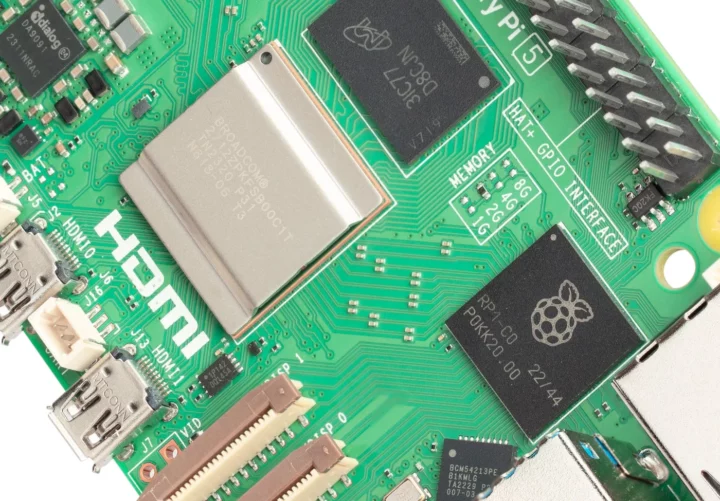
The BCM2712D0 has the same features as the BCM2712C1 found in the 4GB and 8GB RAM versions, but the latter SoC contains functionality intended to serve other markets, still taking die space, but permanently disabled. The new D0 stepping removes that unused silicon to further lower costs.
Except for the lower memory capacity, optimized processor design, and lower price, there should not be other differences compared to other models with 4GB or 8GB RAM. Power consumption might be slightly lower too, but I don’t think it should be significant.
I’m waiting for my Raspberry Pi 5 2GB RAM sample from DHL as the courier imported the board to Thailand last Friday, and it has been traveling around Bangkok since then doing god knows what…
[Update: I just received it… Here’s a photo showing the Raspberry Pi 5 2GB vs a recent Raspberry Pi 8GB.
Unsurprisingly those are virtually identical, and the only obvious differences are the resistor for memory capacity reporting, and the different BCM2712 SoC and memory chip SKUs.
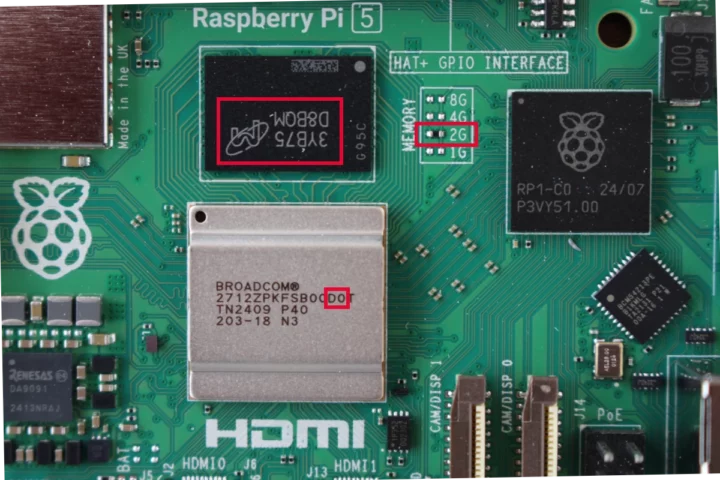
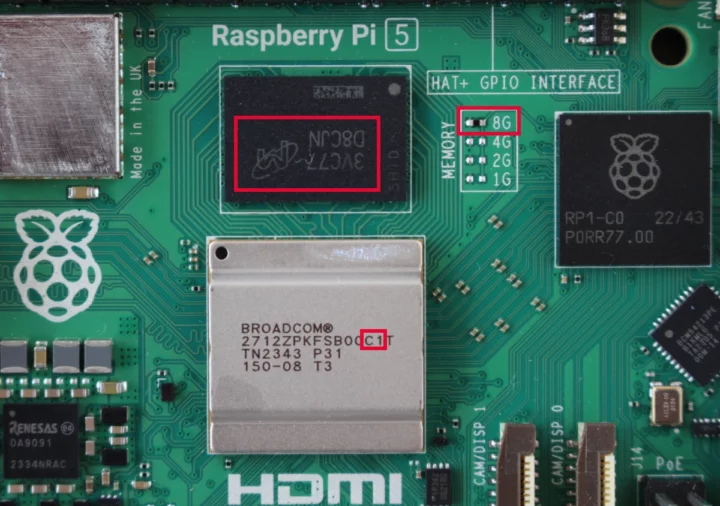
]
The good news is that if you need the extra power provided by the Raspberry Pi 5 over the Pi 4, but don’t need the extra memory, you can now get it for $50 from your favorite reseller plus taxes, shipping, and eventual extra profit margins.

Jean-Luc started CNX Software in 2010 as a part-time endeavor, before quitting his job as a software engineering manager, and starting to write daily news, and reviews full time later in 2011.
Support CNX Software! Donate via cryptocurrencies, become a Patron on Patreon, or purchase goods on Amazon or Aliexpress


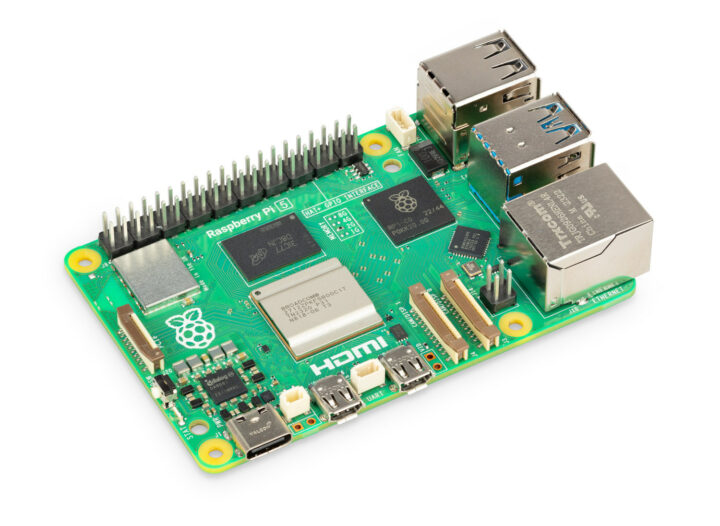
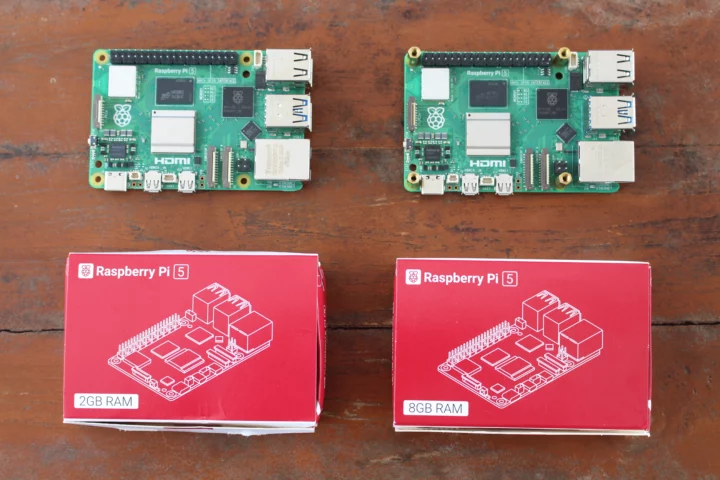



Lost cause
I think I predicted $45 for this. And obviously the Pi 4B 2GB hit $35 but couldn’t be sustained at that price point.
Pi 5 could be interesting when cheap, and 2 GB is more comfortable than 1 GB for many use cases. But here it is an easy decision to proceed to 4 GB.
Maybe the new stepping will be significant to someone if it does lower power consumption a bit.
May I know the difference between the previous stepping and this “cost-optimised” stepping? Thank you in advance.
Broadcom BCM2712 (cost-optimised D0 stepping)
I had incomplete information when writing the post, but since then I’ve added:
It would be interesting to learn, whether they plan to make use of an SoC in their products with that so far disabled die space enabled and what exactly that disabled functionality would be.
Waiting for more reviews on radxa X4. Judging by the specs it will be RPI killer.
An irrelevant (in unit volume) killer. But definitely good at MSRP, with none of the problems of Rockchip/ARM boards.
I hope Intel goes dual-channel for Skymont (Arrow Lake-N?).
$60 for Radxa X4 with full blown x64 N100 and 4GB RAM. Why would any one want berries now?
It’s good to see that they’re back to more accessible prices for “throw-away” devices. There are indeed plenty of use cases which have nothing to do of even 2GB of RAM and where the price matters (i.e. monitoring probes, VPN endpoints or even anything mainly compute-bound).
Yes I agree. With RBPi 5, I’m mostly interested in multi Channel audio with its 4 DI and 4 DO stereo audio interfaces. And having the abilty to use a NVME drive for recording is nice too, except that you have to use an extension board wich is a pain.
But I found the board too expensive, I may now change my mind.